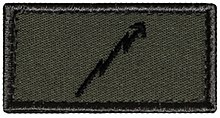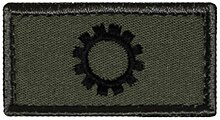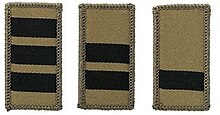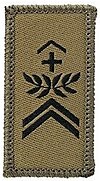Civil Defense (Switzerland)

The “protection of the population from natural and civilization-related disasters and other emergencies” in Switzerland is essentially provided by the Federal Office for Civil Protection (FOCP) and the subordinate civil protection organization. The civil defense organization is intended as a resource for the second season (after fire brigade, police and health / rescue service).
General
Civil protection in Switzerland is operated by the civil protection organization , which is subordinate to the Federal Department of Defense, Civil Protection and Sport . Its task in the event of a disaster includes protection, care and support for the civilian population. The civil defense is difficult overweight (but after fire, police and public health / Rescue service before army personnel) as an insert means of the second relay in the composite system of the civil protection positioned. Members of the civil defense take care of those in need of protection, but also of cultural assets. They support the management bodies at local and regional level and repair infrastructures.
organization
It is the task of the canton and municipality to know their risks and dangers and to take appropriate precautions. The organization of civil protection is also based on the risk analysis as well as on topographical conditions and structures in a canton, region or municipality. So the organization can be different. The cantons and communes determine the personnel requirements within the framework of the available recruiting potential. Personnel management and control is the responsibility of the canton. The following organizational model is fundamentally assumed.
1) The means of command support are the responsibility of the civil defense commander in legal, administrative, financial and training-related matters. When deployed, the means of command support can be subordinate to a civilian management body or, where this is the case, act in favor of a civil defense staff.
Civil Defense Command
The civil protection command is the body that leads civil protection. It usually consists of the civil protection commander and his deputy.
Core tasks:
- Conducting operations
- Management of civil protection in organizational, personal, material and administrative terms
- Preparation, implementation and evaluation of the refresher courses (WK)
- Ensuring the operational readiness of protective structures, material and alarm infrastructure
- Representing the interests of civil protection towards authorities, partner organizations, management bodies and the population
Personnel and activities:
Civil defense commander
- Leading the direct subordinate management
- Creation and updating of plans
- Prepare and conduct meetings and reports
- Preparation and implementation of trainings
- Advising the authorities, partner organizations, management bodies and the population in the area of civil protection
Deputy Civil Protection Commander
- Representing the civil defense commander in his absence
- Relief of the civil protection commander in certain areas of responsibility
Leadership support
A management body can only fulfill its tasks with the help of management support. For this purpose, the civil defense provides personnel for the areas of location, telematics, NBC protection and logistical coordination.
location
Without knowledge of the current situation and its development there is no leadership! It is important to obtain, evaluate and disseminate information. The information is conveyed in various forms, for example through guide cards, situation reports, news cards, operational journals, dispositives, resource overviews or by means of situation presentations.
Core tasks:
- Establishing and operating a situation center
- Development and presentation of a situation report and assessment
- Development, management and presentation of location products
- Participation in a situation group or leading a situation group
Personnel and activities:
Boss location
- Advising the members of the management body on the situation
- Creation of plans and preparations for use
- Active news gathering
- Ensuring the presentation and assessment of the situation
- Coordinating the situation within civil protection
Staff assistant
- Writing of reports
- Keeping maps and overviews
- Operation of information points
Telematics
No communication without telematics! Telematics supports the management bodies by planning, setting up, operating and maintaining telematics connections. The civil defense has suitable material for these tasks and is integrated into the Swiss radio security network (POLYCOM), which enables communication between all partners in civil protection.
Core tasks:
- Creation, operation and maintenance of communication networks
- Operation and maintenance of telematics resources at the management site
- Triggering the alarm
Personnel and activities:
Head of Telematics
- Advising the members of the management body in the area of telematics
- Creation of plans and preparations for use
- Preparation and implementation of training in refresher courses
Telematics group leader
- Leading staff assistants in training and in action
- Ensure the operational readiness of all transmission and telematics means
- Ensuring the operation and maintenance of all internal and external connections
Staff assistant
- Writing of reports
- Construction, operation and maintenance of communication networks (wire and radio)
- Support and instruction of emergency services with regard to the handling of the telematics means
NBC protection
In the case of ABC events, it is important to recognize them quickly, to assess them competently and to react to them correctly. NBC protection plays an important advisory role in management support.
Core tasks:
- In the case of increased radioactivity: measurement of the local dose rate and detection of radioactive contamination. Support the ABC incident services in measuring pollutants.
- Support the ABC incident services in dealing with major ABC incidents and disasters
- Setting up or taking over an ABC decontamination point for people, devices and vehicles and then operating them. Decontamination of surfaces
- Support of the NBC incident services in securing soil, water and air samples
Personnel and activities:
Chief NBC protection
- Advising the members of the management body on NBC protection
- Creation of plans and preparations for use
- Preparation and implementation of training in refresher courses
Expert radiation protection
- Instruct obligated persons / formations regarding radiation protection measures
- Advising those responsible for the mission on radiation protection measures
A-sense
- Measurement of the local dose rate and radioactive contamination in the event of increased radioactivity
- Create related messages
- Assistance with decontamination
Logistic coordination
No action without logistics! There is a need for coordination in civil protection logistics if several partner organizations are deployed over a longer period of time and have the same or similar logistical needs. The aim of the logistics coordination is to support the specialist logistics (logistics of the individual partner organizations) of the partner organizations, avoid duplication in the area of logistics and reduce costs.
Core tasks:
- Coordinating logistical measures. Providing logistical services
- Preparation of plans in the field of logistics
- Advising management bodies on logistical issues
Personnel and activities:
Head of logistics coordination
- Advising the members of the management body on logistics
- Coordinating the logistical measures and resources
- Creation of plans and preparations for use
Protection and care
In the event of disasters and emergencies, first and foremost the endangered or needy population must be helped. Care is understood to mean all those measures which aim to take in people, to accommodate, to feed, to clothe, to care for and to ensure their well-being. The independence and personal responsibility of people seeking protection should be supported and promoted.
Core tasks:
- Looking after people seeking protection
- Support the emergency services
- Support public health
Personnel and activities:
Train driver care
- Leading a support train in training and in action
- Creation of plans and preparations for use
- Preparation and implementation of training in refresher courses
Group leader care
- Leading the supervisor in training and in action
- Establishing and operating care centers
- Ensuring reception, registration and support for people seeking protection
Group leader medical
- Leading the paramedics in training and in action
- Ensure emergency aid on the damage site
- Organizing and monitoring care measures under the guidance of healthcare professionals
paramedic
- Providing emergency aid on the damage site
- Support public health
Psychological helper
- Psychological support for civil defense forces
supervisor
- Operation of care centers
- Support public health
Protection of cultural property
Cultural goods are movable or immovable goods that are of great importance for cultural heritage, such as: B. Monuments, works of art, books and other items. Civil defense helps to ensure effective protection of the cultural property. In addition to warlike events, cultural assets are threatened by natural and technological dangers as well as by theft, acts of vandalism, improper storage and ignorance.
The international basis for the protection of cultural property is the Hague Agreement of 1954 . This requires the states that have acceded to the agreement to safeguard cultural assets in times of peace (record, document, protect them) and their armies to respect them in the event of war. Switzerland acceded to the agreement in 1962 and passed its own federal law in 1966.
Definition of cultural goods: Cultural goods are movable or immovable goods that are of great importance for cultural heritage, such as B. architectural, artistic or historical monuments of an ecclesiastical or secular kind, archaeological sites, groups of buildings that are of historical or artistic interest as a whole, works of art, manuscripts, books and other objects.
In addition to warlike events, cultural assets are threatened by natural and technological dangers as well as by theft, acts of vandalism, improper storage (moisture) and ignorance.
The most important objects are listed in the Swiss inventory of cultural assets of national and regional importance . In addition to the legal basis, this is a first step towards protecting them. Thanks to the knowledge of the location and designation, further protective measures can be planned. Movable cultural assets are recorded and documented in detailed inventories with the help of photographs, brief descriptions and the minimum dimensions (length × width × depth) of the objects. Archives and library holdings are microfilmed. In this way, on the one hand, the original can be stored properly and, on the other hand, the information is secured by means of microfilm. Building documentation is often created in the context of restorations. These include plans, descriptions of the building materials used, information on interior fittings and furniture, and photos. The aim of these measures is to have a basis for the reconstruction of a building in the event of damage or destruction. Possible sources of danger for the cultural property are recorded and their effects on the cultural property are minimized with appropriate measures. If an evacuation plan is to be expected in the case of movable cultural property, an evacuation plan is drawn up which also includes the amount of cultural property as well as the space and equipment required. Special protection rooms, the cultural property protection rooms, are created for important collections and archives. If the evacuation of the cultural property is decided on the basis of a risk analysis, suitable storage locations (access, climatic conditions) are already recorded and set up in a user-friendly manner. In the event of damage, emergency depots are occupied at short notice.
Depending on the municipality, the head of cultural property protection is either a company commander (captain), a platoon leader (lieutenant) or a group leader (corporal). Occasionally, external persons are recruited for this position who have not completed any basic civil protection training, but are deeply rooted in the respective place of deployment or place of residence. Often art historians, historians, teachers or other relevant professions are used.
Core tasks:
- Creation of planning and basic documentation
- Creation of deployment plans in cooperation with the fire department
- Implementation of protective measures (evacuation, storage, etc.) for cultural assets in the event of an incident
- Advising management bodies, emergency services and owners of cultural property
Personnel and activities:
Head of Cultural Property Protection
- Advising the municipal authorities and partners in civil protection on all relevant questions of the KGS
- Creation of operational documentation and operational plans in cooperation with the fire brigade
Cultural property protection specialist
- Assistance in creating and updating an inventory of cultural assets in the community
- Implementation of immediate measures to limit damage to cultural property according to the instructions of the KGS boss or experts
- Preparation and implementation of training in refresher courses
support
In the case of natural and civilization-related disasters, it is primarily about rescuing people, limiting damage and repair work - tasks that are tackled together with the fire brigade.
Core tasks:
- Locating and rescuing from rubble including building tunnels
- Carrying out makeshift technical security work to limit damage or to prevent consequential damage
- Creation of temporary, technical infrastructures at damage sites or for important objects
- Execution of makeshift, technical maintenance or preventive work on protective systems, structures or natural objects for an initial restoration of the protective function and the elementary foundations of life
- Execution of special core tasks of the partner organizations for support or replacement
Personnel and activities:
Platoon leader support
- Leading a support train in training and in action
- Ensuring planning and preparation for operations in his area
- Preparation and implementation of training in refresher courses
Group leader support
- Leading the pioneers in training and in action
- Preparation and implementation of training sequences in refresher courses
pioneer
- Performing rescues from rubble
- Carrying out technical security and maintenance work
- Support the police and fire brigade
logistics
Logistics is understood to mean ensuring the operation of locations, making supplies available, the use of means of transport and construction equipment, the maintenance and provision of materials as well as catering. These services are not only provided for civil protection, but also, if necessary, for partner organizations and the population.
Core tasks:
- Maintaining and operating locations
- Making supplies available and ensuring housekeeping
- Ensuring the administration and accounting of services
- Provision and maintenance of material
- Ensuring transports
Personnel and activities:
Head of Logistic Element (Feldweibel)
- Planning, organizing and managing operations
- Setting up a transport center and organizing vehicles
- Planning and organizing the maintenance and maintenance of the value of the protective systems
- Planning and organizing the maintenance of the material
Accountant and housekeeper (Fourier)
- Ensure the accounts
- Ensure housekeeping
- Organize the procurement and distribution of goods
Head chef
- Managing the kitchen operations
- Preparation of meals for a large number of people
- Takeover and return of a kitchen
- Applying and enforcing hygiene, environmental and safety regulations in the kitchen
driver
- Independent and correct takeover and return of vehicles and trailers
- Safe driving and operation of vehicles and trailers
- Correct behavior in accident situations
cook
- Preparing meals
- Ensuring hygiene and quality assurance
- Operation of stationary and mobile kitchens
Asset manager
- Carrying out maintenance work
- Ensuring the operational readiness of the technical facilities
- Ensuring technical operation
- Eliminating malfunctions
Material manager
- Inventory
- Appropriate material storage
- Maintenance work
- Providing the material
- Borrowing and taking back the material
Functions and degrees
The degree structure is based on the ordinance on functions, degrees and pay in civil defense (FGSV of December 9, 2003).
It defines the degrees according to functions as follows:
| function | Grade | |
|---|---|---|
| Civil defense commander | Colonel, lieutenant colonel, major or captain | |
| Deputy Civil Defense Commander | Major, captain or lieutenant | |
| Boss location
Head of Telematics Head of NBC protection Head of logistics coordination Head of Cultural Property Protection Train driver support Platoon leader support |
Lieutenant (promotion to first lieutenant by the civil defense commander possible) | |
| Head of logistics element | Feldweibel | |
| Accountant and housekeeper | Fourier | |
| Group leader in telematics
Group leader support Group leader first aid Group leader support chef |
Corporal (promotion to sergeant by the civil defense commander possible) | |
| Centralist (specialist)
Polycom Dispatcher (Specialist) A-tracer (specialist) Expert radiation protection (specialist) Psychological emergency helper (specialist) Paramedic (specialist) Asset manager (specialist) Material manager (specialist) Cultural property protection specialist (specialist) Staff assistant Supervisor Pioneer |
Civil defense soldier (transport to private by the civil defense commander possible) |
Compulsory service
The federal law on civil protection and civil protection (population and civil defense law BZG) determines the group of service requirement , the exceptions and the length of service required.
Protective service persons are all men with Swiss citizenship who are suitable for the protection service. (Art. 11). Recruiting takes place in a joint process with the military and community service.
Exceptions to the mandatory protection service (Art. 12):
- Military and community service are not required to do protective service. (Paragraph 1)
- Military service providers who withdraw from compulsory military service are not required to do military service if they have completed at least 50 days of military service. (Paragraph 2)
- Civil service compulsory who withdraw from compulsory civil service are not required to do civil service. (Paragraph 3)
The BZG stipulates the duration of compulsory service (Art. 13):
- The compulsory protection service begins in the year in which the obligated persons turn 20 years old and lasts until the end of the year in which they turn 40 years old. (Paragraph 1)
- The Federal Council can make protective service mandatory: a. extend it at most so that it lasts until the end of the year in which those subject to protective service turn 50; b. Shorten it at most so that it only lasts until the end of the year in which those subject to protective service turn 35.
Protective structures
In principle, every resident should have a place in a civil defense facility near their place of residence. This applies not only to an armed conflict, but also to disasters and emergencies. In Switzerland there are around 300,000 personal protection rooms and 2,500 protection systems in which over 95 percent of the population can be accommodated.
Civil Defense Museum
The only Civil Defense Museum of Switzerland is located in a three-story circular bunker from World War II in Zurich Wipkingen six hundred eighty-two thousand one hundred sixty-seven / two hundred forty-nine thousand five hundred and eighty-three . In addition to the original facilities of the former medical aid station, the museum also shows the structure of modern civil protection and today's tools for rescue operations and technical assistance.
See also
- Water alarm
- Polyalert
- Polycom (Switzerland)
- Blue air raid protection
- Economic national supply
- Compulsory stock
Web links
- Christoph Flury: Civil Defense. In: Historical Lexicon of Switzerland .
- Federal Office for Civil Protection FOCP
- Protective structures
- Swiss Civil Protection Association in the archive database of the Swiss Federal Archives
- Association of Swiss Civil Protection Organizations in the archive database of the Swiss Federal Archives
- BABS: The history of Swiss civil protection
Individual evidence
- ↑ The history of Swiss civil defense. Federal Office for Civil Protection FOCP, accessed on April 4, 2020 .





















